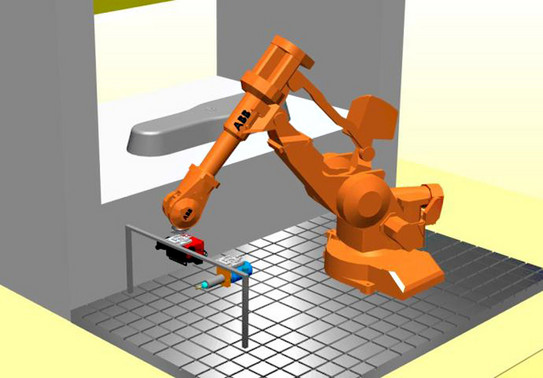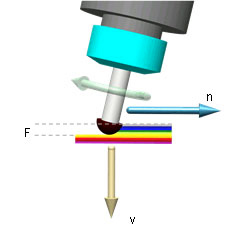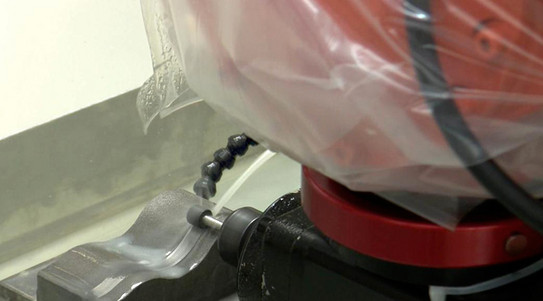SFB 708 Subproject A6
Robot-assisted Spotting of Hard Material Layers
Problem
The trend towards increasingly high-strength and higher-strength materials is placing ever new demands on the tools and machines used in manufacturing. In particular, the stresses on tools, e.g. in sheet metal forming, are constantly increasing. Without additional measures to increase the wear resistance, the service life of these tools would be reduced. For this reason, coating systems for wear protection are increasingly being used in this area.
Despite the good quality of the applied coating systems, a final optimisation of the geometry and the surface properties is often still necessary. At present, this is usually still done by manually regrinding the surface. Due to the size of the components to be ground (e.g. large forming tools), however, this is very time-consuming and the use of machine tools is also often not possible. For this reason, industrial robots are to be used to carry out such processes.
Objective
The aim of sub-project A6 in SFB 708 is to develop robot-assisted grinding processes to optimise the geometry and surface properties of hard-coated surfaces. The research work focuses on the modelling of a robot-assisted grinding process, a process-adapted robot path planning and the development of strategies for process control in the process.


In order to achieve this overarching goal of the sub-project, the following sub-goals are being pursued in detail. 1:
1. development and implementation of a process-adapted robot path planning: this path planning is to generate machining paths which, in addition to geometric path parameters such as target positions and speeds, also contain technological parameters such as the pressure force of the grinding tool used.
2. deriving and calibrating an empirical stock removal model for robot-assisted, force-controlled grinding with mounted points: In the forward direction, the model is to provide the force values to be applied as well as target positions and speeds as input variables for technological robot path planning, starting from the target stock removal. In the backward direction, this model is to calculate the resulting removal from the measured position, speed and force actual values of the industrial robot during the machining of the hard material layer surfaces.


3. the development of an in-process control which, even in the case of the most unfavourable defect accumulation, avoids at all costs excessive removal which would require an enormous repair effort.
Procedure
Subproject A6 deals with the main work packages in SFB 708
WP1: Development of Methods for Combined Geometric and Technological Path Planning
WP2: Modelling and Determination of the Relevant Parameters as well as Calibration of the Ablation Model
WP3: Implementation of a Process Control System with the necessary control and correction procedures
AP4: Implementation of the Overall Process
Research- and development partner
The partners in SFB 708 are listed on the SFB-Homepage.
Funding Reference
Subproject A6 is funded by the German Research Foundation (GRF) as part of Collaborative Research Centre 708.


![[Translate to English:] [Translate to English:]](/storages/zentraler_bilderpool/_processed_/2/6/csm_Altes_Maschinenbau-Gebaeude_3a1a87015a.jpg)